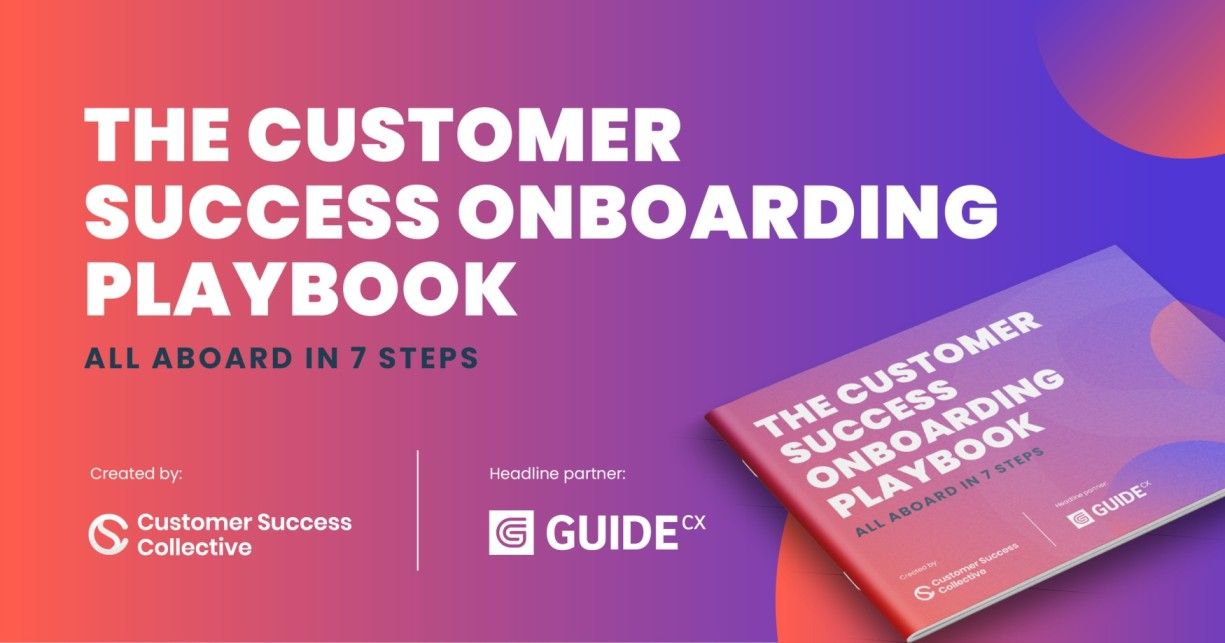Ever heard of the “trough of disillusionment”? Coined by Gartner as part of its Technology Hype Cycle, this term describes how a customer’s initial excitement about your product drops when the product doesn’t meet their expectations. This is why reducing time to first value (TTFV) is crucial — the faster customers experience the initial value in your products, the more likely they are to remain satisfied and stay for years to come.
Designing a stellar onboarding experience can help companies streamline this path to TTFV.
Interestingly enough, even a single disappointing experience can cause 32% of customers to leave companies they love. And when it comes to SaaS providers, customers are even more likely to abandon a product and go searching for another solution. With an increasingly competitive landscape, SaaS companies must expedite their customers’ discovery of first value.
Read on to learn more about time to first value and how to create a value-driven onboarding experience that can also help enhance customer retention.

What is TTFV?
Time to first value (TTFV), a critical but too often overlooked metric, refers to how long it takes for customers to get initial value or benefit from your product.
Customers expect to get value quickly. For example, according to Visa, more than 70% of users completely abandon their attempt to open an account if it takes longer than 20 minutes.
While the time it takes to reach the full functionality of a complex SaaS product may be longer than that, the point stands — you need to help your customers see value as soon as possible. Establishing clear objectives and milestones during onboarding can help users identify value early on.
For example, a project management app should typically help customers save time and become more efficient at juggling multiple projects in a matter of days or weeks, rather than months. However, the TTFV for enterprise-level programs (like resource planning software) may take longer due to the possible complexities of integrating, updating, and optimizing activities across every department.
Still, even with complex software, there are opportunities to help customers feel confident in their choice to use your product, especially during onboarding. This includes customizing the onboarding experience according to a user’s role, goals, or other relevant needs so your product can help customers experience quick wins.

Why is TTFV important for SaaS companies?
While it may seem like other metrics such as churn, customer lifetime value (CLV), and customer retention are more meaningful than TTFV, that isn’t necessarily the case. Metrics such as churn and retention help you gauge your success in maintaining strong relationships with your clients. TTFV, on the other hand, provides insights into how you can improve these relationships from the start.
Your customer’s perception of your product value also affects churn, retention, and CLV. Customers who do not see value early enough can easily become dissatisfied, and unhappy customers don’t stick around.
SaaS customers have an even lower tolerance for disappointment with their chosen product and are quick to turn to a competitor. But, if you ensure your customers quickly experience value that matches their expectations for your product, you can improve customer satisfaction and retain more customers.
How to calculate your TTFV
You can measure the TTFV in several ways, but it all depends on your product and goals. It is also ultimately driven by data and insights gathered from your customers. Consider the following ways TTFV can be measured for a SaaS product.
Onboarding milestones
Think about where during the onboarding process users can get an early win using your product. Maybe they finished a specific checklist or created their first project. Or maybe they successfully imported data from another program. Once you figure out what milestones to use for your product, your users (and your onboarding team) will experience huge benefits.

User engagement
Consider what actions users take that demonstrate they believe your product can help them meet their goals. For example, for products where users have access to a free trial, the noteworthy action may be how quickly they upgrade to a premium tier or use specific features. You could also look at how long it takes for them to start personalizing their accounts, which could indicate they are becoming invested in your product.
Time to return on investment
How can you determine when users recoup their investment in your products? It depends on the nature of your products and when in the implementation cycle your customers will start seeing the benefits they expect.
For example, say you have an invoicing platform that saves someone a few hours per week and helps them quickly track down client payments. In this scenario, it’s probably easy for your clients to reach ROI quickly because using the software saves them time and money right away.
Larger software programs may take longer to implement, and it might be more difficult for your customers to pinpoint their first ROI moment. That’s why it’s important to include milestones in your onboarding process — so you can show customers that they’re making measurable progress toward their goals.
Customer surveys
You can create surveys for users to fill out during the onboarding process to gauge how they are feeling about your product. You can ask questions about which features or resources they are finding most helpful and even what obstacles are holding them back from achieving their goals with your product.
5 steps to improve customer onboarding to reduce TTFV
The TTFV metric is typically associated with the onboarding phase, during which your customers should start experiencing the value of your product. Optimizing your customer onboarding experience helps customers quickly discover the benefits of using your product. This improves customer satisfaction, increases the chances of customers remaining with your company, and sets the right tone for the customer relationship from the very beginning of their journey.
Here’s a five-step process for reducing TTFV through strategic customer onboarding.

1. Identify the point of first value
To reduce TTFV, you first need to determine what it means. Which point or event will give your customers that “aha” moment of realizing the benefits of your product? This isn’t a value point solely determined by your team but instead discovered from gathering customer feedback. Use surveys or interviews to understand what customers consider to be the point where they first realized the value of your product.
This value point is then tied back into the actions you can measure during onboarding. For free trial users, it could be a specific feature customers consistently upgrade to so they can start or keep using it. Or it could be that they complete a learning phase or checklist to understand how to unlock key features that make a real difference in achieving their goals.
Once you know what success looks like for your customers and what the important milestone is on that path, you can understand what you need to measure to calculate your TTFV.
2. Calculate your current TTFV
Now that you have your value point, evaluate your existing data. Determine how long it typically takes customers to reach that first point of value.
If it takes about three days for customers to complete the checklist that brings them to that first value-recognition moment, then your TTFV is three days. Or maybe most customers upgrade at the end of the 14-day trial, which would make 14 days your TTFV.
Uncovering what your customers find most important as they learn to implement your product is key to understanding and calculating the TTFV.

3. Evaluate your onboarding process for gaps
Once you understand that initial value point and the time it takes customers to reach it, it’s time to review your onboarding process. During this review, you and your team will need to evaluate the path customers take to reach that first point of value.
Here are a few questions you can consider as you review your process.
- Are my customers using the most efficient path to get to TTFV?
Or are they being put through an inefficient onboarding process and spending time on items that could be slowly introduced to them later on? - What is holding my customers back from reaching TTFV?
Maybe they find the initial learning modules or checklist confusing or unintuitive. Sometimes users can feel overwhelmed during onboarding, especially if they’re completely new to your product. Or they may feel stuck in cookie-cutter paths that don’t immediately address their most pressing needs. - What actually seems to be going really well?
Maybe your TTFV is only a few days, but always consider what can be done to improve the process. Think about what you can tweak, rearrange, and further optimize to continue improving TTFV.
Using onboarding software with an integrated customer satisfaction (CSAT) tool can help you gather customer insights to uncover gaps and modify your process so customers reach TTFV fast.
4. Create a plan for each customer segment
Use the information in your review to further optimize your onboarding process to support customer success. Create a value-driving success plan tailored for each customer to ensure they reach their TTFV as quickly as possible. This includes personalizing the process based on what you know about easy customer’s role and specific goals for your product. Making just a few optimizations to the onboarding process allows you to provide each user with a customized roadmap and automated prompts throughout to keep them on track.
Optimizing your onboarding for TTFV may also mean breaking the onboarding process down into phases, with the initial steps being a simple, effective way to get customers to implement your product. Your customers mainly need to know what to do to see results quickly. Get that early buy-in, and they will stick around long enough to learn about all the other helpful features they can use.

5. Implement customer onboarding best practices
When creating your onboarding plan, consider some of the other best onboarding practices in your industry and beyond. This includes:
- Establishing clear expectations for all users
- Streamlining and simplifying the entire process
- Keeping the onboarding process intuitive
- Creating a user-friendly interface
- Maintaining transparency on user progress and the next steps
- Enhancing the customer service experience
An efficient onboarding process is one that wows customers and helps them access the features they currently need the most with as little friction as possible.
Accelerate time to first value with customer onboarding
As competition continues to increase in the SaaS space, you have to ensure customers are having a noteworthy experience from the very beginning. SaaS customers also have high expectations of onboarding, and most only move forward or stick with companies who have been intentional in creating a seamless, educational experience.
With more than 90% of customers still believing that their onboarding experiences have been lacking, there’s a clear need for companies that can quickly align their product promise with their customer’s onboarding experiences. Companies that don’t prioritize onboarding can quickly find themselves losing customers to their competitors.
GUIDEcx helps companies create an onboarding experience that can meet and exceed customer expectations. Our platform helps you automate communication, manage tasks, and design effective workflows to deliver value to your customers as quickly as possible. To learn more about how GUIDEcx can help automate your onboarding process, book a demo today.



 Follow us on LinkedIn
Follow us on LinkedIn




